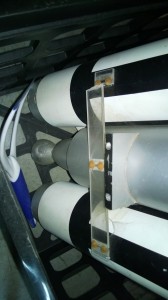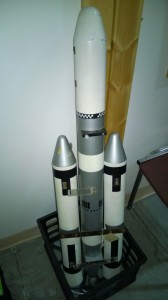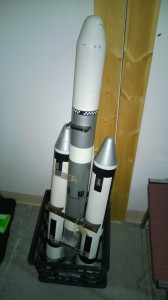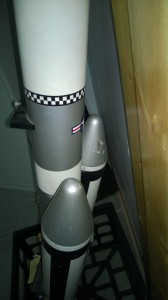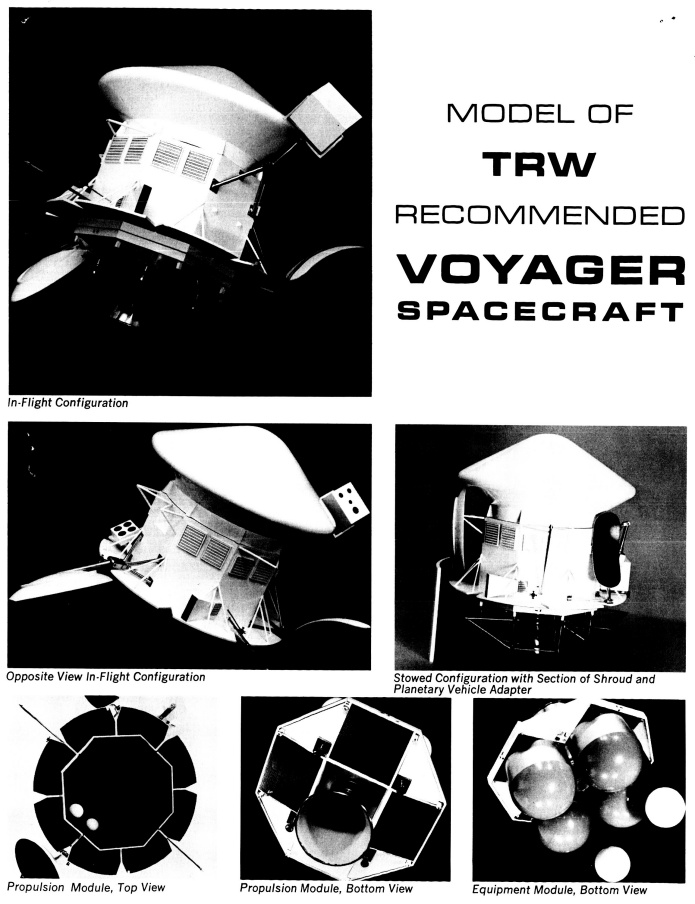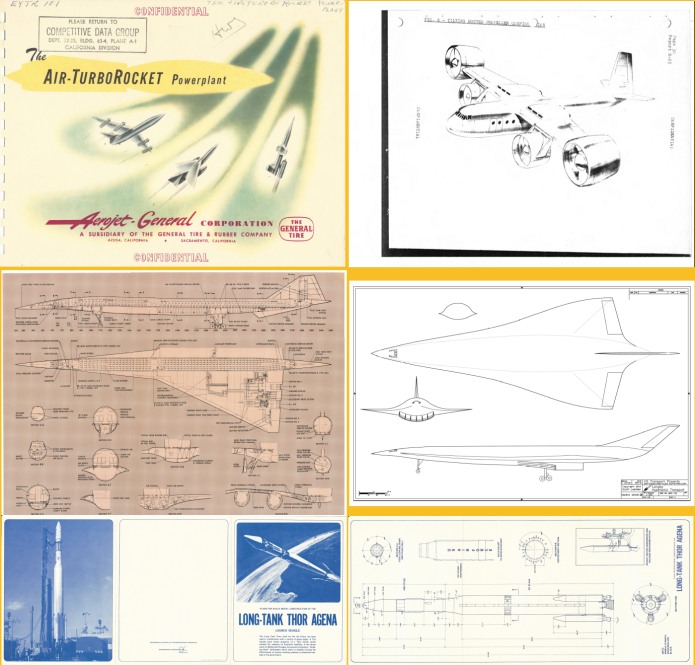Still plugging away at this. The forward “Shuttle” is just about done… some tinkering in the bay and with the forward landing gear, and it’ll be there. At 1/200 scale, the landing gear components are really small, so the decision has been made to mold this with the landing gear fixed in the stowed position, tucked up against the main body. It would look spiffy as a stand-alone kit at 1/72 scale, but I doubt there’s a market for that.
Here’s how Space Station V can service an Orion and an Aries simultaneously. The manipulators arm that reaches out from the Station and grabs the Aries has to be not only nimble, but pretty strong; the boarding deck is under 0.02 G’s. Not a whole lot, but for a vehicle massing (handwave) a hundred thousand pounds, it’s a fair weight to be cantilevered out like that. The arm grasps of one the landing legs, roughly swings the ship into position, and then an arm from the “top” of the lander projects and grabs an extendable structure that projects from the bay. This second arm stabilizes the lander and precisely orients it for the dock that projects from the face of the station and fits over the boarding door. A third, smaller arm snakes out from the lander and mates with the extendable structure. Both of the landers arms contain umbilicals to transfer consumables and propellants and such.
Why not dock it in the bay?
The Aries does not fit in the bay. It just doesn’t. Parsecs are not a unit of time and the Aries Ib doesn’t fit in the Space Station V docking bay. And even if you scale up the SSV so that the Aries does fit… you won’t be able to service both an Aries and an Orion at the same time unless the station is so vast that you’ve got room to move a ship in, then shove it over to one side of the bay and bring in another along the centerline.
It looks glorious:
Aliens M577 Armored Personnel Carrier Vehicle Replica
Presented for the first time in a large-scale format, this intricately detailed Aliens APC model is in glorious 1:18 scale, measuring a very impressive 20-inches long! Using the original blueprints as reference, no detail has been spared making this the most accurate recreation possible. The Aliens M577 Armored Personnel Carrier (APC) features moveable gun turrets and rotating wheels, and is authentically weathered for added realism. It is complete with a separate Aliens-themed display base, designed to replicate the floor tiles of the Sulaco. This museum quality scale model is constructed from heavyweight polystone and then hand painted to the finest detail, and limited to 1,000 pieces worldwide.
“Polystone” is just a hoity-toity word for “urethane resin mixed with rock dust.” This, sadly, is a more expensive medium than injection molding, as is normally used on car toys & replicas of this size. And thus the going price is $540. Ouch.
A truly gigantic RC Antononv 225 Mriya and Buran flying around in Switzerland. All goes well until the Buran is released and then… well, you see why when the 747 dropped the Enterprise, the 747 promptly dove just as fast as it could…
[youtube WRI2y0cwHd0#t=21]
C’mon, who doesn’t like the Batmobile? Go on, buy these. BUY THEM. Click the Amazon links and buy… oh, a couple of each. DO IT.
And because why not, that’s why:
Before “Voyager” meant “a flyby probe of the Outer Solar System,” it meant “an orbiter and lander for Mars.” It was, essentially, a bigger, more ambitious version of what became the Viking missions. big enough that the Saturn V was the launcher, sending two craft at a time.
A number of companies put in bids to design and build the spacecraft. Below are images of the TRW concept. The conical section is the capsule holding the lander; the propulsion section is derived from the Lunar Module descent stage.
The November rewards for the APR patrons have been released. They include:
PDF document: “The Air Turborocket Powerplant,” an Aerojet brochure from October 1955 describing an advanced airbreathing propulsion system for missiles, bombers, intercepts, etc.
PDF document: “VTOL Transport Aircraft Comparative Study,” a report from Vertol, 1956. Describes, with data, sketches and three-view diagrams, a range of different types of VTOL transports, including tilt-wings, lift jets, aerodyne, etc.
DIAGRAMS: two parter this month. First: layout, inboard and sectional views of the Lockheed L-2000 SST. Second: Douglas diagrams… “Plans for Scale Model Construction of the Long-Tank Thor Agena.” Good diagrams of the launch vehicle.
CAD diagram: NASA-Langley hypersonic transport.
If you would like to access these items and support the cause of acquiring and sharing these pieces of aerospace history, please visit my Patreon page and consider contributing.
The third October PDF Review has been posted over at the Aerospace Projects Review Blog. This describes wind tunnel testing of the XP-85 “Goblin”, specifically with the trapeze recovery system.
These PDF Reviews are brought to you by the APR Patreon. For as little as 75 cents per month, you can help me dig into the forgotten corners of aerospace history… and get yourself some goodies in the process. Head on over!


